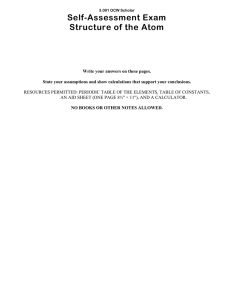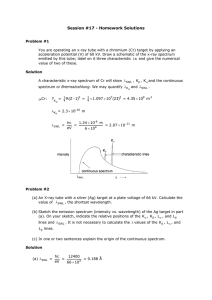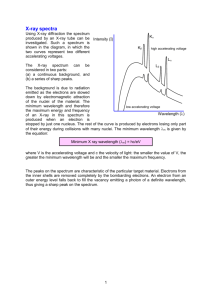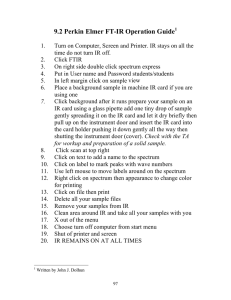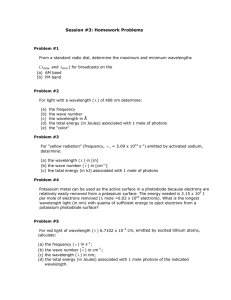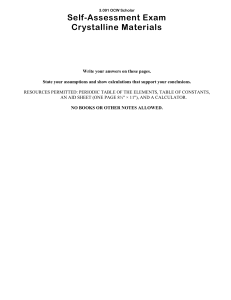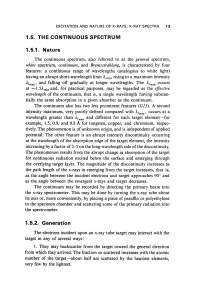Self-Assessment Exam Structure of the Atom Solution Key
advertisement
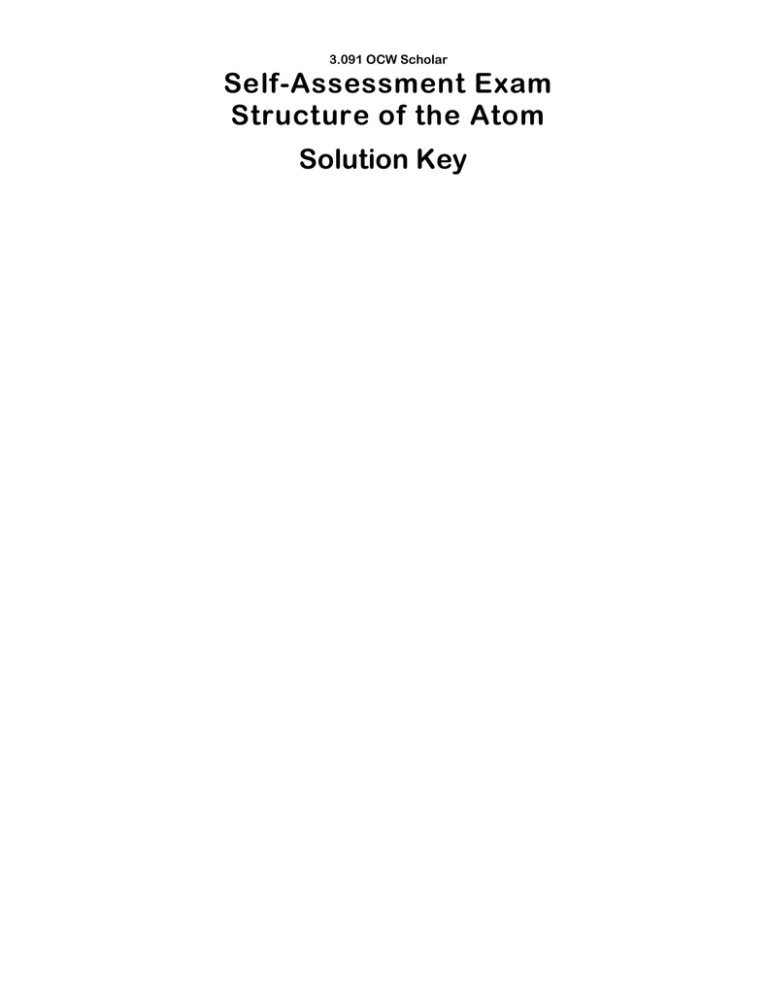
3.091 OCW Scholar Self-Assessment Exam Structure of the Atom Solution Key 2009 Test #1, Problem #1 Uranium metal can be produced by the reaction of uranium tetrafluoride (UF4) with magnesium (Mg) in a sealed reactor heated to 700ºC. The by-product is magnesium fluoride (MgF2). To ensure that all the magnesium is consumed in the reaction, the reactor is charged with excess UF4, specifically 10% more than the stoichiometric requirement of the reaction. To produce 222 kg of U, how much UF4 must be introduced into the reactor? Assume complete conversion of Mg. Express your answer in kg. 2009 Test #1, Problem #2 (a) In box notation, give the complete electron configuration of each of the following gas-phase species: (i) Ca2– (ii) Mg4+ (b) Give the chemical identities of the species with these ground-state electron configurations: (i) a neutral atom with [Xe]4f145d106s26p1 (ii) an atom with net charge 4+ and [Ar]3d3 (c) Write the quantum numbers (n, l, m, s) of one of the 3d and one of the 4s electrons in iron (Fe). 2009 Test #1, Problem #4 For a given cation, C, and anion, A, show the following four energy states on the same energy-level diagram: (1) ions at infinite separation; (2) ion pair CA; (3) ion line CACACA…; (4) crystalline solid of CA. Assume that the comparison is based upon identical numbers of ions in all four states. The diagram need not be drawn to scale; however, you must convey relative values of the different energy states. 2009 Test #1, Problem #6 Atoms of ionized helium gas (He+) are struck by electrons in a gas discharge tube operating with the potential difference between the electrodes set at 8.88 V. The emission spectrum includes the line associated with the transition from n = 3 to n = 2. Calculate the minimum value of the de Broglie wavelength of scattered electrons that have collided with He+ and generated this line in the emission spectrum. 2009 Test #2, Problem #2 (a) You discover that someone has been using your x-ray generator and has changed the target/anode. To determine the chemical identity of the new target, you go ahead and operate the x-ray generator and find the wavelength, , of the K peak to be 0.250 Å. What element is the target made of? (b) Hilary Sheldon conducts an experiment with her x-ray diffractometer. A specimen of tantalum (Ta) is exposed to a beam of monochromatic x-rays of wavelength set by the K line of titanium (Ti). Calculate the value of the smallest Bragg angle, hkl, at which Hilary can expect to observe reflections from the Ta specimen. DATA: K of Ti = 2.75 Å; lattice constant of Ta, a = 3.31 Å (c) Sketch the emission spectrum (intensity versus wavelength) of an x-ray target that has been bombarded with photons instead of with electrons. Assume that the incident photons have more than enough energy to dislodge K-shell electrons in the target. On your spectrum label the features associated with K radiation, K radiation, and L radiation. MIT OpenCourseWare http://ocw.mit.edu 3.091SC Introduction to Solid State Chemistry Fall 2009 For information about citing these materials or our Terms of Use, visit: http://ocw.mit.edu/terms.
